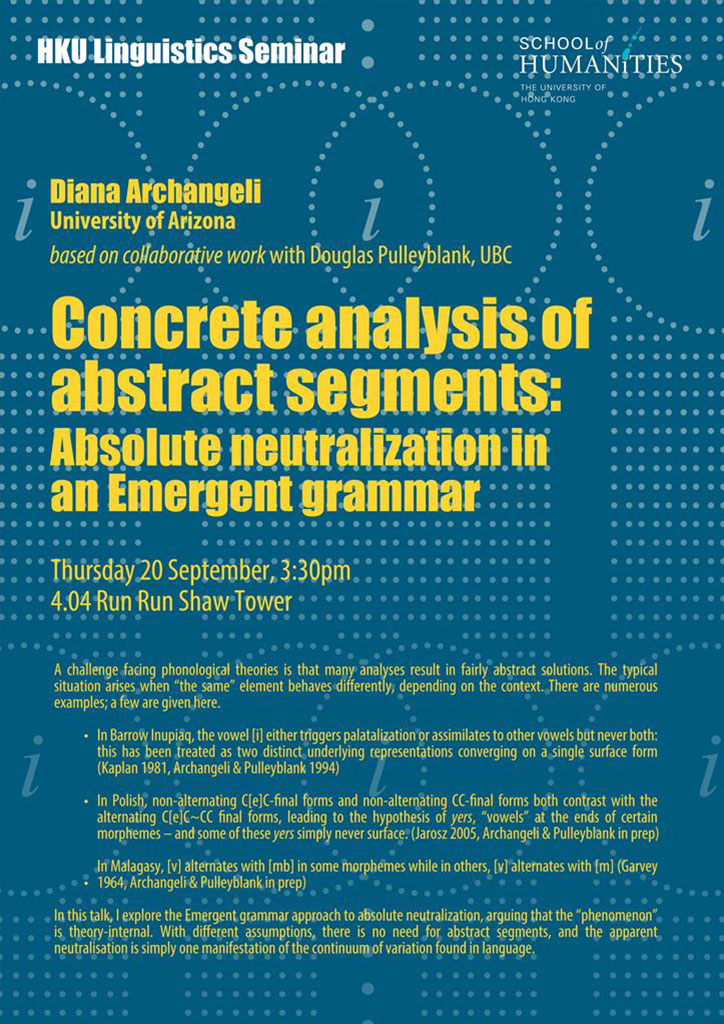
Department of Linguistics
Concrete analysis of abstract segments: Absolute neutralization in an Emergent grammar
Diana Archangeli
University of Arizona
based on collaborative work with Douglas Pulleyblank, UBC
Abstract
A challenge facing phonological theories is that many analyses result in fairly abstract solutions. The typical situation arises when “the same” element behaves differently, depending on the context. There are numerous examples; a few are given here.
- In Barrow Inupiaq, the vowel [i] either triggers palatalization or assimilates to other vowels but never both: this has been treated as two distinct underlying representations converging on a single surface form (Kaplan 1981, Archangeli & Pulleyblank 1994)
- In Polish, non-alternating C[e]C-final forms and non-alternating CC-final forms both contrast with the alternating C[e]C~CC final forms, leading to the hypothesis of yers, “vowels” at the ends of certain morphemes – and some of these yers simply never surface. (Jarosz 2005, Archangeli & Pulleyblank in prep)
- In Malagasy, [v] alternates with [mb] in some morphemes while in others, [v] alternates with [m] (Garvey 1964, Archangeli & Pulleyblank in prep)
In this talk, I explore the Emergent grammar approach to absolute neutralization, arguing that the “phenomenon” is theory-internal. With different assumptions, there is no need for abstract segments, and the apparent neutralisation is simply one manifestation of the continuum of variation found in language.
